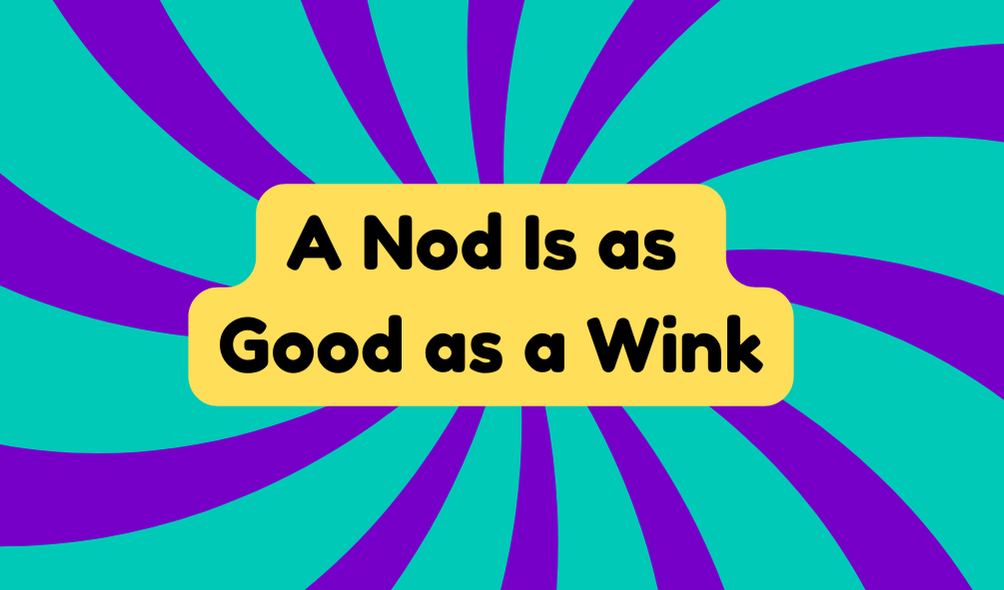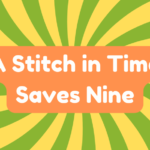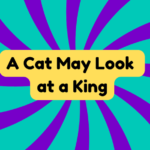The phrase "a nod is as good as a wink" emphasizes the significance of non-verbal communication. It suggests that subtle gestures can convey understanding without the need for words. While some may overlook these cues, they often carry deeper meaning in interactions. A raised eyebrow or sly smile can shift conversations in unexpected ways. Recognizing these signals is essential. To fully grasp the nuances of this concept, one might explore examples and implications of non-verbal interactions further.
Synonyms
When discussing the phrase "A nod is as good as a wink," it is beneficial to explore its synonyms, which can illuminate different nuances in communication style. Understanding these alternatives can enhance one's grasp of non-verbal communication and subtle signals, often laden with meaning. Examples include:
- A raised eyebrow – signifying skepticism or curiosity.
- A sly smile – conveying shared secrets or amusement.
- A knowing glance – indicating mutual understanding without the need for words.
These expressions underscore the complexity of conveying messages, often revealing the unspoken layers that exist between individuals in various contexts.
Example of Sentences
Examples of sentences that illustrate the phrase "A nod is as good as a wink" can shed light on the nuances of non-verbal communication. The world often thrives on subtle signals, which are transcendent in their power. Consider these impactful instances:
- A fleeting glance between friends can convey understanding without a word spoken.
- A raised eyebrow during a conversation can signal doubt or agreement.
- Siblings often navigate their dynamic through shared non-verbal cues, reflecting deep familiarity.
These examples reveal the potency of actions over words, emphasizing the need for awareness in an era driven by innovation and subtlety.
Origin
The origins of the phrase "A nod is as good as a wink" date back to the 16th century, revealing a history intertwined with the nuances of communication. Initially, it highlighted the subtlety of non-verbal cues in a historical context where indirect messages often signaled moral ambiguities. The phrase evolved through cultural evolution, shedding references to a "blind horse" that signified the futility of such signals. This transformation indicates how phrases adapt in society. By the 19th century, it reflected a more positive understanding, illustrating how communication has shifted from covert intentions to expressions of camaraderie, trust, and shared humor among individuals.
Collocations
Understanding collocations related to the phrase "A nod is as good as a wink" is essential, especially since they illustrate how individuals use language to convey meaning subtly. These combinations of words reveal much about human interaction, primarily through non-verbal cues and subtle communication. The power of such expressions lies in their ability to foster trust.
- Trust builds over time.
- Non-verbal cues can speak volumes.
- Subtle communication encourages connection.
Though often overlooked, these collocations challenge the perception that directness is always necessary, inviting a deeper appreciation for the nuanced ways language can connect people.
How to Use in Everyday Language
Non-verbal communication plays an essential role in everyday interactions, and using the phrase "A nod is as good as a wink" can effectively underscore this point. Individuals can integrate this expression into conversations to highlight the power of subtle cues. For instance, a nod accompanied by a shared glance can signal agreement or understanding without uttering a word. This approach not only fosters clarity among friends but also enhances the collaborative spirit of discussions. However, relying solely on non-verbal signals may risk misinterpretation. Ultimately, understanding the balance between words and gestures is important in today's innovative communication landscape.
Why Is It Still Relevant Today?
In today's fast-paced world, the phrase "A nod is as good as a wink" remains relevant, emphasizing the importance of non-verbal communication. In an era dominated by screens and digital interactions, subtle cues still hold immense power. Individuals often rely on non-verbal signals to convey emotions and intentions without explicit words. This reliance reflects the intricacies of human relationships, where context shapes understanding. However, as society becomes more detached from face-to-face interactions, the danger lies in misinterpretation. Consequently, while the phrase embodies a timeless truth, it also highlights a growing gap in genuine connection—a critical concern for modern communication.







